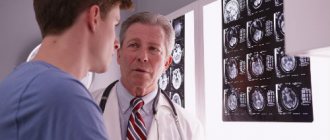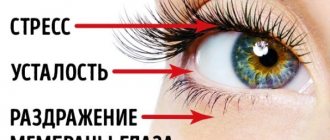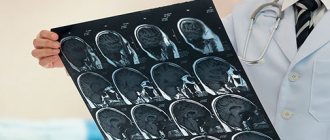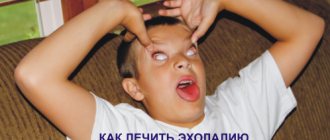Publication date: January 2, 2020
Most people experience a pressing headache at least occasionally. According to medical statistics, up to 92% of the population is susceptible to it. Pain syndrome can develop spontaneously (for no apparent reason) or due to the influence of certain external factors. For a pressing headache, treatment depends on the reasons that caused it. If attacks occur frequently, this is a good reason to consult a doctor.
Main etiology
Osteochondrosis is a disease that disrupts blood flow, causing deformation of the vertebrae.
At the same time, it is difficult for the patient to move and regulate his coordination. Often, with age, the vertebral discs change, which provokes weakness, heaviness in the head, drowsiness, and fog in the eyes.
When confirming the diagnosis of osteochondrosis, an integrated approach is used, which consists of taking medications, physiotherapy, and herbal medicine.
If the disease is at an advanced stage, the patient is prescribed acupuncture. If indicated, the patient requires the help of an osteopath.
Intracranial pressure is diagnosed due to the large volume of fluid entering the brain. This is due to the following factors:
- head injury;
- congenital diseases of the central nervous system;
- poisoning of various etiologies;
- brain pathologies;
- oxygen starvation.
Against the background of high intracranial pressure, the brain malfunctions. At the same time, its functions are impaired. The patient complains of weakness, dizziness and heaviness in the head. Additionally, other signs may appear.
Migraine and epilepsy are also characterized by the above symptoms. Migraine is an attack-like pain. More often the disease is hereditary.
In addition to heaviness and pain in the head, the patient complains of lethargy and nausea. Therapy is carried out taking into account the frequency of attacks and the severity of the pathology.
Meniere's syndrome is an inflammation that develops in the inner ear. Against the background of this process, the patient experiences headache, dizziness, and nausea.
Asthenic neurosis or neurasthenia is associated with a pathological state of the nervous system, which manifests itself against the background of prolonged emotional or physical stress.
Neurasthenia develops for the following reasons:
- constant stressful situations;
- experiencing conflict;
- hard work that causes stress;
- conflicts;
- stressful, intense work;
- insufficient sleep;
- work without interruptions.
If this disease is confirmed, the patient requires long-term treatment to eliminate it. To eliminate the disease in question, the patient needs the help of a psychotherapist.
Heaviness in the head, attacks of dizziness, nausea, and other symptoms of neurasthenia are eliminated with sedatives. Drug treatment will significantly improve the patient's condition.
For a complete recovery, it is recommended to rest fully, protecting yourself from stress and conflicts. It is also recommended to change activities: physical to mental work, and vice versa.
If heaviness in the head is caused by a mechanical injury, the help of a neurologist is required. With this etiology, pain receptors, including arteries and nerve endings, are irritated.
Doctors identify light, minor bruises. More often, heaviness in the head, pain, and nausea are provoked by “whiplash injuries” that patients receive in moving vehicles.
Against the background of a sharp jerk during movement, the muscle is easily injured, which leads to stretching of the joints and dislocation of the spine in the cervical region.
Heaviness and other discomfort in the head may appear after diving, with a strong cough.
Pathologies
Insomnia, heaviness, lethargy, cloudiness of consciousness and other unpleasant sensations can also be a consequence of the disease.
Vegetovascular dystonia
This condition occurs with minor physical activity, causing a disruption in the outflow of venous blood, which is why its excess begins to put pressure on all the tissues in the skull, its contents seem to overflow and become heavier. Heaviness during VSD is primarily felt in the back of the head. Dystonia is treated with medications.
Meniere's disease
Inflammation of the inner ear with the release of excess fluid. It is not excreted, but accumulates in the labyrinth, exerting a pressing effect on the nerve endings located there. Because of this, the vestibular system sends distorted signals to the brain. This causes swaying when walking, a heaviness in one direction.
Spine pathologies
Changes in the cartilage tissue of the spine, which often compresses the spinal nerves and cervical vessels. In the latter case, this leads to hypoxia, as well as the appearance of various abnormalities in the blood vessels.
Spondylosis is a deformation of the spine that causes head movement to cause severe pain and other unpleasant sensations.
Nose problems
Sinusitis is a disease of the nasal sinuses, mastoiditis is an accumulation of purulent deposits behind the ear, sinusitis and meningitis give the head a leaden heaviness. Myositis - inflammation of the muscles in the back of the head is also accompanied by “heaviness” of the head.
Vascular pathologies
As with poisoning, when there are abnormalities in the functioning of the organs of the circulatory system, the brain is the first to suffer. A slight lack of oxygen - and a person begins to have problems: confusion, the head becomes heavy, loss of strength, nausea, stupor.
Atherosclerosis, vasculitis and other vascular diseases often disturb patients also due to unpleasant sensations under the skull.
There are a lot of reasons why the head becomes heavy; we have given only the most common ones. If a symptom appears systematically, you should visit a doctor. He will take into account the characteristics of your body, prescribe diagnostics and recommend what you need to do to get rid of unpleasant sensations.
Causes of a heavy head
As mentioned earlier, the reasons for the appearance of such a symptom will not always indicate health problems. For example, in the event of a failure in the hormonal system, a person almost always develops fog in the head, a confused, cloudy consciousness. This condition often accompanies the pregnancy of women, and forgetfulness and irritability are also added. In addition, cloudy consciousness and fog in the head of the fair sex appear during menopause.
Depending on the cause, the pathological manifestation may occur once a week or less, or become a constant companion.
The condition when the head is in a fog is often accompanied by the following symptoms:
- dizziness and a feeling of lethargy, accompanied by a feeling of heaviness in the head;
- fatigue and weakness that are not associated with any type of activity or rest;
- a feeling of futility and dullness of consciousness - as if there is a vacuum in the head after drinking alcohol or drugs;
- headache, increased heart rate, and changes in blood pressure may be present. Often a person does not think well and cannot even move due to the fact that the muscles “do not work.”
Diagnosis and treatment of psychogenic dizziness
Dizziness is one of the most common symptoms in neurological and general somatic practice. Complaints of dizziness rank third after complaints of headache and back pain. First of all, you must remember that dizziness is just a symptom and not an independent disease. It can be a manifestation of various sufferings - cardiovascular, endocrine, mental, diseases of the spine, brain, etc., in total there are about 80 different nosological forms. Determining the causes of dizziness and its treatment require a multidisciplinary approach, and sometimes the use of complex equipment. Due to these objective difficulties, no more than 20% of patients receive a correct diagnosis and adequate treatment [1].
The head of a large otoneurological clinic in Germany and the author of the famous monograph “Dizziness,” Thomas Brandt, cites in it the most common causes of dizziness. Psychogenic dizziness, including paroxysmal phobic dizziness, ranks second after benign paroxysmal dizziness (Fig. 1).
The cause of psychogenic dizziness can be any mental illness, but most often anxiety disorders.
Diagnosis of psychogenic dizziness
Psychogenic dizziness refers to vague sensations described as dizziness, which most often occur in neurotic, stress-related disorders.
Diagnosis of psychogenic dizziness includes two sequential and mandatory stages.
The first stage is a negative diagnosis aimed at excluding all other possible causes of dizziness:
- damage to the vestibular system at any level;
- somatic and neurological diseases accompanied by lipothymia;
- neurological diseases accompanied by impaired walking and balance.
This requires a thorough examination of the patient, in some cases with the involvement of otoneurologists, cardiologists, hematologists, etc., as well as a thorough paraclinical study.
Thus, when examining a patient with dizziness at the first stage, it is important to determine the type of dizziness. To do this, you should carefully collect anamnesis - ask the patient in detail what he means by the word “dizziness.” With vestibular, systemic, true vertigo or vertigo, the patient experiences an illusory sensation of movement of a stationary environment in any plane, as well as a sensation of movement or rotation of his own body. The cause of systemic dizziness is damage to the vestibular analyzer at the peripheral or central level.
Psychogenic dizziness is always non-systemic in nature. The patient describes any sensations other than rotation: fog in the head, instability, fear of falling, and others.
When making a differential diagnosis, it is also extremely important to identify and clarify the nature of concomitant somatic and neurological manifestations to exclude other “organic” causes of non-systemic dizziness. For this purpose, a study of nystagmus, balance tests, audiography, computed tomography (CT) or magnetic resonance imaging (MRI), Doppler ultrasound of the main arteries of the head, compression-functional tests, radiography of the skull, internal auditory canal, cervical spine, complete blood count, fasting blood sugar, blood urea nitrogen and other studies [4].
The second stage is a positive diagnosis of neurotic disorders associated with stress.
Among emotional disorders, the most common cause of dizziness is anxiety or anxiety-depressive disorders. It is the frequency of anxiety, which is the most common emotional disorder and is observed in 30% of the population, that determines the high prevalence of psychogenic dizziness.
The clinical picture of anxiety disorders consists of mental symptoms, the most common of which are anxiety, worry about trifles, a feeling of tension and stiffness, as well as somatic symptoms, mainly caused by increased activity of the sympathetic division of the autonomic nervous system. One of the commonly observed physical symptoms of anxiety is dizziness and lightheadedness. The combination of mental and physical symptoms is not accidental - when the body is threatened or there is any potential threat, preparation occurs to fight the danger or flee from it. These changes in the body are ensured by the autonomic nervous system, which is a potential “bridge between the psyche and soma.” The most common symptoms of anxiety are presented in Fig. 2, 3.
Purely anxiety disorders are relatively rare in clinical practice. In most cases, in 70% of patients, anxiety disorders are combined with depressive disorders. The mental symptoms of anxiety and depression are largely similar and overlap. The comorbidity of the two most common mental disorders is determined by common biochemical roots—the role of serotonin in the pathogenesis of both conditions is discussed. The high effectiveness of both tricyclic antidepressants (TCAs) and some selective serotonin reuptake inhibitors (SSRIs) for both anxiety and depression confirms that serotonin has both anxiolytic and antidepressant effects. Finally, with the long-term existence of anxiety disorders, the patient inevitably develops a feeling of complete spiritual paralysis and depression develops. The onset of depression is accompanied by symptoms such as chronic pain disorder, weight loss, sleep disturbances, and others, which can increase symptoms of anxiety. Thus, a vicious circle develops: the prolonged existence of anxiety causes the development of depression, and depression increases the symptoms of anxiety. The high frequency of comorbidity of anxiety and depression is taken into account in the latest classifications - a special subgroup has been identified within anxiety states - mixed anxiety-depressive disorder.
According to ICD-10, there are four types of anxiety disorders: anxiety disorders (generalized anxiety disorder, mixed anxiety-depressive disorder, panic disorder); phobic anxiety states (simple phobias, social phobia, agoraphobia); obsessive-compulsive disorder; reactions to a stressful stimulus (simple reactive disorder, post-stress reactive anxiety disorder).
The feeling of dizziness most often occurs in patients with generalized anxiety disorder. In this case, the patient suffers from constant unjustified or exaggerated fears for his family, health, work or material well-being. At the same time, an anxiety disorder is formed regardless of any specific life event and, thus, is not reactive. In such a patient, at least six of the common anxiety symptoms listed above may be observed every or almost every day for more than six months—the “rule of six.”
A patient with generalized anxiety, when visiting a neurologist, rarely reports mental symptoms, but, as a rule, presents a lot of somatic (vegetative) complaints, where dizziness can be the leading symptom, or actively presents the only complaint of dizziness. This happens because the patient is most alarmed by the feeling of dizziness, thoughts of a stroke or other serious brain disease arise, mental disorders - fear, impaired concentration, irritability, wariness, etc. are regarded as a reaction to severe, currently not identified illness. In other cases, mental disorders are mild, and the clinical picture is actually dominated by dizziness. The latter option is especially common in cases where anxiety disorders occur in patients with congenital vestibulopathy. Such people have an imperfect vestibular apparatus since childhood. This is manifested in their poor tolerance to transport (sickness), poor tolerance to heights, swings and carousels. In an adult, these symptoms are less relevant; over the years, the vestibular apparatus is trained and vestibular disorders are compensated, however, when anxiety occurs, various sensations may arise - instability, fog in the head, etc., which are interpreted by them as dizziness.
One of the most important features of psychogenic dizziness is its combination with disorders in other systems, since the somatic manifestations of anxiety are always multisystemic (
). The ability of a doctor to see, in addition to complaints of dizziness, the disorders that naturally accompany it in other systems, allows us to understand its clinical essence and determine its psychosomatic (vegetative) nature [7]. For example, dizziness in generalized anxiety disorder is often associated with increased breathing (hyperventilation syndrome), in which, due to excessive blood oxygen saturation and hypocapnia, presyncope, paresthesia, muscle spasms or cramps, cardialgia associated with increased tone of the pectoral muscles may develop. as a result of increased neuromuscular excitability, tachycardia, etc. To identify polysystemicity, it is necessary to actively ask the patient about the presence of other complaints and disorders in addition to dizziness.
Psychogenic dizziness can also be one of the main symptoms of panic disorder. It is characterized by the recurrence of panic attacks and anxiety in anticipation of the next attack. The diagnosis of a panic attack is characterized by the presence of emotional disorders, the severity of which can range from a feeling of discomfort to panic and other mental or somatic symptoms - at least 4 out of 13, among which one of the most common is dizziness. Dizziness in the picture of a panic attack can occur spontaneously, without any apparent reason, in the words of patients - “out of the blue.” However, in more than half of the cases, it is possible to find out that dizziness arose after emotional stress or fear experienced by the patient, especially for the very first and, as a rule, the most severe attack.
A special type of phobia is phobic postural vertigo. It is described by patients as instability in the form of attacks (seconds or minutes) or a feeling of an illusory violation of the body’s stability lasting a fraction of a second and can occur spontaneously, but is more often associated with special perceptual stimuli (overcoming a bridge, stairs, empty space) [2].
The most demonstrative is psychogenic dizziness in patients suffering from agoraphobia. At home, surrounded by relatives or a medical facility, the patient may not experience dizziness or it may be mild (serve himself, do housework without difficulty). A neurological examination does not reveal any walking or balance disorders in such a patient when special tests are carried out. When moving away from home, especially in transport, in the subway, dizziness, gait disturbance, instability, suffocation, heart pain, tachycardia, nausea, etc. occur.
In all of these cases, dizziness is a symptom, a manifestation of one or another type of anxiety disorder.
Thus, the following clinical features of psychogenic dizziness can be distinguished:
- Dizziness is intermittent and has been described as “brain fog,” a feeling of mild intoxication, or a fear of falling. Fluctuating instability in the form of attacks (seconds or minutes) or a sensation of an illusory violation of the body’s stability lasting a fraction of a second is possible.
- Dizziness appears spontaneously, but is often associated with specific perceptual stimuli (bridge, stairs, empty space) or situations that are perceived by the patient as provoking factors (subway, department store, meeting, etc.).
- Dizziness and complaints occur in a standing position and while walking, despite the normal performance of stability tests such as the Romberg test, tandem walking, standing on one leg, etc. With psychogenic dizziness, a significant decrease in staggering in the Romberg position is often noted when distraction - psychogenic Romberg.
- The cardinal clinical sign of psychogenic dizziness is its combination with disorders in other systems (polysystemic), which indicates its secondary psychosomatic (vegetative) nature.
- The onset of the disease follows a period of fear or emotional stress and often occurs in individuals with vestibulopathy (congenital deficiency of the vestibular apparatus).
- Anxiety and anxiety-depressive disorders accompany dizziness, although dizziness can occur without anxiety.
- There are no objective clinical and paraclinical signs of organic pathology.
Psychogenic dizziness occurring after benign paroxysmal vertigo
Benign paroxysmal vertigo (BPV) is the most common type of vertigo. Its cause is cupulolithiasis - the formation of deposits (detritus) in the semicircular canals of the inner ear, which irritate the receptors as they move and cause severe vestibular vertigo. When changing body position, often when getting out of bed or turning the head, the patient experiences a feeling of strong rotation, lasting from several seconds to a minute and accompanied by nausea, vomiting and other vegetative symptoms. To diagnose BPH, the Hallpike test is used. The patient turns his head 30 degrees to the side and moves from a vertical to a horizontal position with his head slightly tilted back. At the same time, he experiences severe systemic dizziness and nystagmus. The disease is benign, but is prone to relapse. To treat it, special Epley positional techniques are used, the task of which is to mechanically remove detritus from the posterior semicircular canal of the inner ear, after which the dizziness stops.
An attack of BPH is always difficult for the patient, can be repeated when turning the head, chains him to bed, and forces him to take a forced position. Undoubtedly, DPG is a stress-generating factor, is accompanied by fear and can provoke reactive anxiety disorder in an emotionally labile person. In some cases, the anxiety disorder that develops following DPG is iatrogenic. Doctors often misdiagnose patients with BPH as acute cerebral circulatory disorders in the vertebrobasilar system, hospitalize them, and conduct massive courses of vascular therapy, thereby convincing the patient of the severity of his condition and the presence of a fatal disease. In such frequent cases, the patient develops an anxiety disorder as a reaction to a severe neurological disease. Dizziness becomes unsystematic (instability, fear of falling, fog in the head, etc.), acquires a constant course, periodically intensifying. In such cases, both negative and positive diagnosis of psychogenic dizziness are especially important. A Hallpike test is mandatory. It must also be remembered that acute cerebrovascular accidents (ACVA) in the vertebrobasilar system, in addition to dizziness, are necessarily accompanied by other signs of damage to the brain stem: oculomotor, bulbar, sensory and other disorders.
Treatment of psychogenic dizziness
In the treatment of psychogenic dizziness, complex therapy is used, combining both non-drug and medicinal treatment methods [7].
Non-drug treatments include:
1) vestibular gymnastics, aimed at training and reducing the excitability of the vestibular apparatus; 2) breathing exercises: transition to the abdominal type of breathing, in which exhalation is twice as long as inhalation. Such breathing exercises reduce hyperventilation disorders comorbid with psychogenic dizziness. To relieve severe hyperventilation disorders, during a hyperventilation crisis, breathing into a paper or plastic bag can be recommended; 3) the most effective method of treatment is psychotherapy.
Medicinal methods.
1) Psychotropic therapy has priority in the treatment of psychogenic dizziness.
The first-line drugs for the treatment of anxiety disorders are antidepressants - SSRIs, Paxil and Fevarin have an anxiolytic effect; tricyclic antidepressants (amitriptyline) are used less frequently due to the presence of a large number of side effects and poorer tolerability. Traditional anxiolytics are benzadiazepines (Phenazepam, Diazepam, Alprazolam, Clonazepam, etc.). In some cases, a positive effect in the treatment of anxiety disorders is achieved with the use of “small” antipsychotics (sulpiride, tiapride, thioridazine), usually using small doses.
The drug Atarax (hydroxyzine) has shown pronounced effectiveness against psychogenic dizziness developing as part of generalized anxiety disorder. Atarax is an H1-histamine receptor blocker. It has a pronounced anti-anxiety, antihistamine, antipruritic and antiemetic effect. In a study conducted at our department, prof. Solovyova A.D., it was shown that in patients with vegetative dystonia syndrome, which is the main neurological manifestation of generalized anxiety disorder, complaints of dizziness and lipothymic (presyncope) states decreased by almost 80%.
2) Additional therapy.
As an additional therapy, the drug Betahistine is used, which reduces the excitability of the vestibular apparatus and is effective for all types of dizziness, including psychogenic.
The effectiveness of Betaserc was tested in patients with psychogenic dizziness using a special computer program developed by the staff of the Institute of Medical and Biological Problems, prof. Kornilova L.N. et al. In a joint study with our department [6], it was shown that the drug objectively improves vestibular reactivity and the state of the oculomotor system (
). A follow-up study revealed that the effectiveness of Betaserc was temporary, so it should be used for a long time for this type of dizziness as an additional therapy, especially in cases where dizziness develops in people with congenital vestibulopathy and acts as a leading somatic symptom.
For questions regarding literature, please contact the editor.
E. G. Filatova , Doctor of Medical Sciences, Professor of the FPPOV MMA named after. I. M. Sechenova, Moscow
Polysystemicity of somatic manifestations of anxiety
. Efficacy of Betaserc in the treatment of psychogenic dizziness
Symptoms
Experts note the following symptoms that are often encountered in practice:
- cardiac arrhythmia (may be accompanied by palpitations);
- mental abnormalities (expressed in the form of increased excitability or, conversely, passivity bordering on apathy);
- vascular spasms;
- regular headaches and even migraines;
- cloudy head, floating vision, confusion, forgetfulness;
- elevated temperature, fever;
- sleep disturbance;
- constantly cold hands (even in hot weather);
- aching pain in the joints, regardless of whether the person has arthritis or not;
- lack of strength, frequent fainting;
- sudden, short-term loss of the ability to breathe.
Treatment methods
Treatment of the ailment depends on the cause of dizziness and severity. To establish a diagnosis, in addition to general tests, an encephalogram (appropriate for various head injuries), CT, and MRI may be prescribed. If necessary, an X-ray of the brain of the head and cervical spine is performed. In some cases, it is necessary to visit an otolaryngologist, ophthalmologist or cardiologist
But, as a rule, the pain syndrome does not manifest itself so clearly, and the discomfort that arises until the main cause of its formation is determined can be eliminated with the help of analgesics and NSAIDs (Ketonal, Analgin, Paracetamol, Nimid, etc.).
If you are worried about a cloudy head, then you need to check your blood pressure. If the indicators change upward or downward, it is necessary to take the appropriate medicine (for high blood pressure - Nifedipine, Amlodipine, for low blood pressure - Gutron). Blood pressure pills are selected by a doctor, since such drugs affect the body differently.
If the deviations are insignificant, then with low pressure you can drink a cup of strong sweet tea or coffee, lemongrass or eleutherococcus tincture, with high pressure, chokeberry jam, take hawthorn tincture or drink a glass of green tea can help.
When overexerted, a person needs proper rest. You can take a sedative (Novo-passit, Sedafiton). When returning to normal work, heaviness in the head may reappear, so you need to include time for rest, physical activity and walks in the fresh air in your schedule.
It is also important not to forget about a full night’s sleep, which should be 7-8 hours
Discomfort in the head caused by cervical osteochondrosis, in the absence of a vertebral hernia, can be eliminated by increasing physical activity and performing physical procedures. Such actions are aimed at improving blood supply to the whole body.
If the head has become heavy due to neurasthenia or hypersomnia, the doctor will prescribe antidepressants (Deprim), tranquilizers (Phenobarbital) and sleeping pills (Sonnat). With positive dynamics of treatment, the patient’s ability to work is restored, night’s sleep and appetite are normalized, and the symptoms of a heavy head disappear.
Heaviness in the head caused by various reasons must be eliminated. If discomfort appears due to physiological processes, then it is better to get rid of it without using medications. After all, any drug has its side effects that have a negative impact on the human body. If gentle methods do not help, it is better to find out the cause of the symptoms from a doctor and undergo the prescribed treatment.
How to diagnose?
The only and sure way to determine the cause of poor health is to consult a doctor. As a rule, the patient is referred for examinations:
- taking tests;
- X-ray, CT, MRI;
- consultation of specialized specialists.
The prescription of other measures depends on the severity and frequency of symptoms. In most cases, the diagnosed cause of pressure, wooliness and head fog is damage to the cervical vertebrae.
Heavy and cottony head, reasons, what to do, treatment
It’s not just a headache that can interfere with normal perception of the colors of the world around you and living in peace. Sometimes a tedious heaviness in the head is perceived worse than a migraine attack. After all, a migraine will go away after a certain period of time, and the feeling of a burden in the head can torment a person for a very long time.
How do patients describe their feelings?
- In the morning, my head pulls towards the pillow.
- There is a feeling that the skull has been filled with stones.
- It was as if blood from the whole body had collected in the skull.
- Metal disks move heavily in the brain.
- Difficulty concentrating.
- Information is not perceived adequately.
- I want to put my head in my arms and sleep, sleep, sleep.
- Nausea creeps up my throat.
- Lethargy falls on the body, it is difficult to even raise an arm.
What to do if you constantly have a heavy head, which causes a lot of discomfort, impairs your ability to work, causes lethargy and adversely affects your well-being? First of all, if possible, free yourself from any work and rest, and at this time find out the reasons why there is heaviness in the head, often accompanied by dizziness.
Let’s immediately deal with the usual factors that can cause problems in any person (fatigue, diets, taking medications, lack of sleep), and then we’ll go through the main diseases, which are not always actively manifested and cause the feeling that the head has become cast iron.










